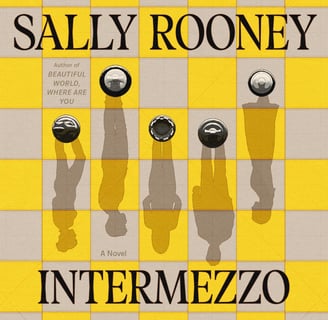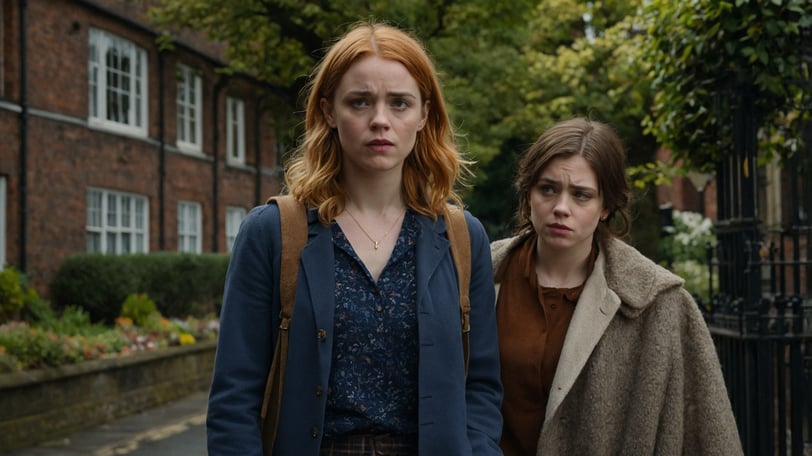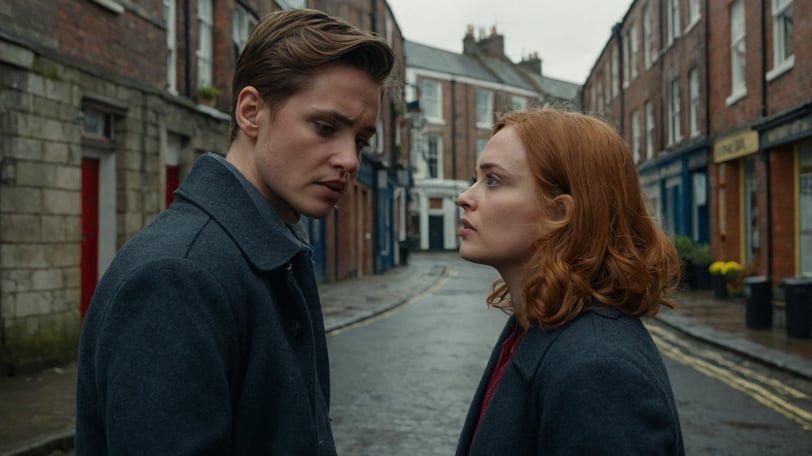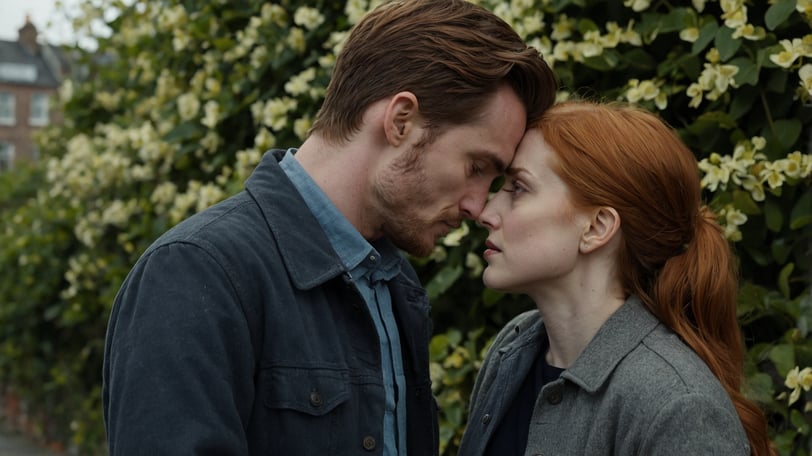Book Of The Day: Intermezzo by Sally Rooney
Rooney’s writing continues to excel in capturing the quiet beauty and pain of everyday life, and Intermezzo is a perfect example.
Lance Klaytan Short
10/2/20246 min read


Sally Rooney has a knack for drawing readers into the intricate emotional lives of her characters, and Intermezzo is no exception. This novella is filled with the subtle yet powerful interactions we’ve come to expect from Rooney’s work. It’s a tightly woven narrative that dives deep into relationships, identity, and the complexities of modern life.
In Intermezzo, Rooney invites us into the lives of a few characters over a brief but intense period. Their journeys are steeped in both quiet and explosive moments, with much of the action occurring in conversation—or the absence of it. It’s a story about the moments that fall between bigger life events, the "intermezzo" of existence. Let’s break it down into sections, summarizing as we go, and dive deeper into the themes and ideas that make this novella resonate.


Chapters 1–3
In the opening chapters, we’re introduced to the main characters, who instantly feel like typical Rooney protagonists: introspective, emotionally distant yet yearning for connection. There's Ella, a university student studying philosophy, and her older boyfriend, Andrew, an artist who’s growing disillusioned with his work. Their relationship is defined by silence and missed connections, even though they spend most of their time together. Ella, uncertain about her future, constantly wonders if she’s making the right decisions about her studies and personal life, but instead of discussing her concerns with Andrew, she holds them in.
One of Rooney’s talents is portraying the nuances of relationships, and here, she shows us how two people can be physically close yet emotionally distant. Conversations between Ella and Andrew often trail off into quiet moments where neither knows what to say, and it's through these silences that we start to feel the tension between them. Rooney’s writing captures the internal conflicts we’ve all experienced—the thoughts we can’t quite articulate, the feelings we’re afraid to express. It’s clear that both Ella and Andrew are searching for something more, but they’re not quite sure what that is or how to find it.


Chapters 4–6
As the novella moves forward, we see more of Ella’s internal struggle. She’s navigating the pressures of academia and trying to define her identity outside of her relationship with Andrew. She has friends, but her connections with them seem just as fragmented as her relationship with Andrew. There’s an important subplot involving her best friend, Claire, who represents a kind of mirror to Ella—someone who seems more confident, decisive, and in control. Ella admires Claire’s ability to make bold choices, but she also feels a sense of inferiority.
The tension between Ella and Andrew reaches a new height when they attend a party together in Chapter 5. The party, filled with academics and artists, serves as a backdrop for a series of awkward interactions. Ella and Andrew, once again, fail to connect, and the party ends with a heated argument between them about their future. This is where Rooney’s mastery of dialogue comes into play. The argument feels so real and raw—filled with half-finished thoughts, misunderstandings, and emotional outbursts. It’s not just about what they say, but also what’s left unsaid. Even though they’re right next to each other, the reader can easily sense the growing tension and frustration between them.


Chapters 7–9
In these chapters, Rooney takes us deeper into Ella’s inner world. She becomes more introspective, questioning not just her relationship but also her own motivations and desires. There’s a particularly poignant scene in Chapter 8 where Ella visits her childhood home, a place that stirs up memories of her younger self. She reflects on how much she’s changed—or hasn’t—and wonders if she’s just drifting through life, waiting for something to happen.
Meanwhile, Andrew’s art career is in flux, and his frustration with his work bleeds into his relationship with Ella. Rooney does a superb job of showing how personal dissatisfaction can seep into other aspects of life, souring even the most intimate connections. Ella and Andrew have a few more tender moments in these chapters, but there’s a palpable sense that they’re both holding back, unsure of how to bridge the emotional gap between them.
In a particularly striking passage, Ella muses on the idea of potential—both in herself and in Andrew. She wonders if they’re stuck in this state of waiting, always hoping that things will get better without ever taking the necessary steps to change their situation. It’s a reflection on the “in-between” moments in life, the periods where we feel neither here nor there, unsure of what comes next.
Chapters 10–12
As the novella approaches its conclusion, the tension between Ella and Andrew comes to a head. In these chapters, we see them grapple with their individual desires and the reality of their relationship. Ella becomes more assertive, questioning Andrew more directly about his plans for the future and his commitment to her. For the first time, she’s vocalizing her doubts rather than keeping them to herself. It’s a turning point for her character, though it’s clear she’s still uncertain about what she truly wants.
Andrew, on the other hand, is slipping further into a kind of emotional detachment. He’s more focused on his art than on Ella, and while he claims to care about her, his actions tell a different story. Their relationship feels like it’s hanging by a thread, and you can sense that something has to give.
What’s compelling about these chapters is how Rooney paints the breakdown of their relationship in such a nuanced way. There’s no explosive fight or dramatic event that causes their split. Instead, it’s the accumulation of small moments—missed opportunities for connection, unspoken feelings, and quiet frustrations—that lead them to drift apart. It’s a subtle but powerful depiction of how relationships can slowly unravel without either person fully realizing it.


Chapters 13–15
The final section of the novella brings a bittersweet resolution to Ella and Andrew’s story. They finally have an honest conversation about their future, and while it’s painful, there’s a sense of relief in the air. Both of them acknowledge that they’ve been holding onto something that’s no longer working, and they decide to part ways. It’s a quiet ending, but one that feels true to the characters and the tone of the novella.
What stands out in these final chapters is the way Rooney captures the complexity of endings. There’s sadness, of course, but also a sense of possibility. Ella, in particular, feels like she’s on the verge of something new—though she’s not quite sure what that is yet. The novella ends with a scene of Ella walking alone through the city, reflecting on the uncertainty of the future, but also feeling a quiet sense of hope.
Final Thoughts
Intermezzo is a beautifully written novella that explores the nuances of relationships and the quiet moments that shape our lives. Rooney’s characters feel deeply real, and their struggles with love, identity, and connection are universal. What makes this novella stand out is the way Rooney captures the in-between moments of life—the silences, the unspoken thoughts, the times when we’re not quite sure where we’re headed but are moving forward nonetheless.
If you’re a fan of Sally Rooney’s previous works, you’ll find Intermezzo to be a rewarding and thoughtful read. It’s not a grand, sweeping narrative, but rather a subtle, introspective story that lingers with you long after you’ve finished the final page. Rooney’s writing continues to excel in capturing the quiet beauty and pain of everyday life, and Intermezzo is a perfect example of her skill in doing so.


—
Thanks for reading! Some links in ShortHaus blog posts are affiliate links. Meaning we will receive a commission at no additional cost to you. In fact, for our book reviews, you’ll receive a free audiobook as a result of our partnership with Audible.
Creative Empowerment
Helping new authors elevate their work, maximizing their audience through marketing, design and publication.
Explore
© ShortHaus MDP 2024. All rights reserved.
